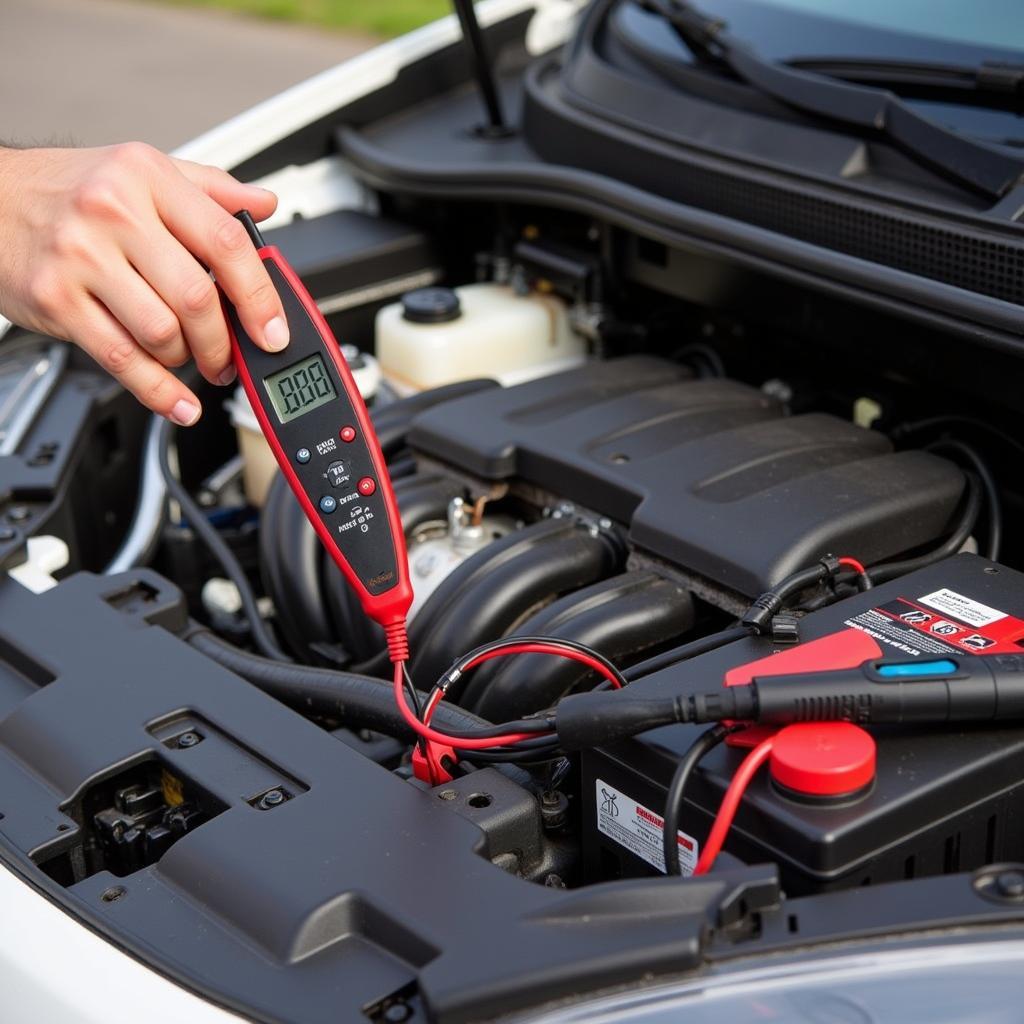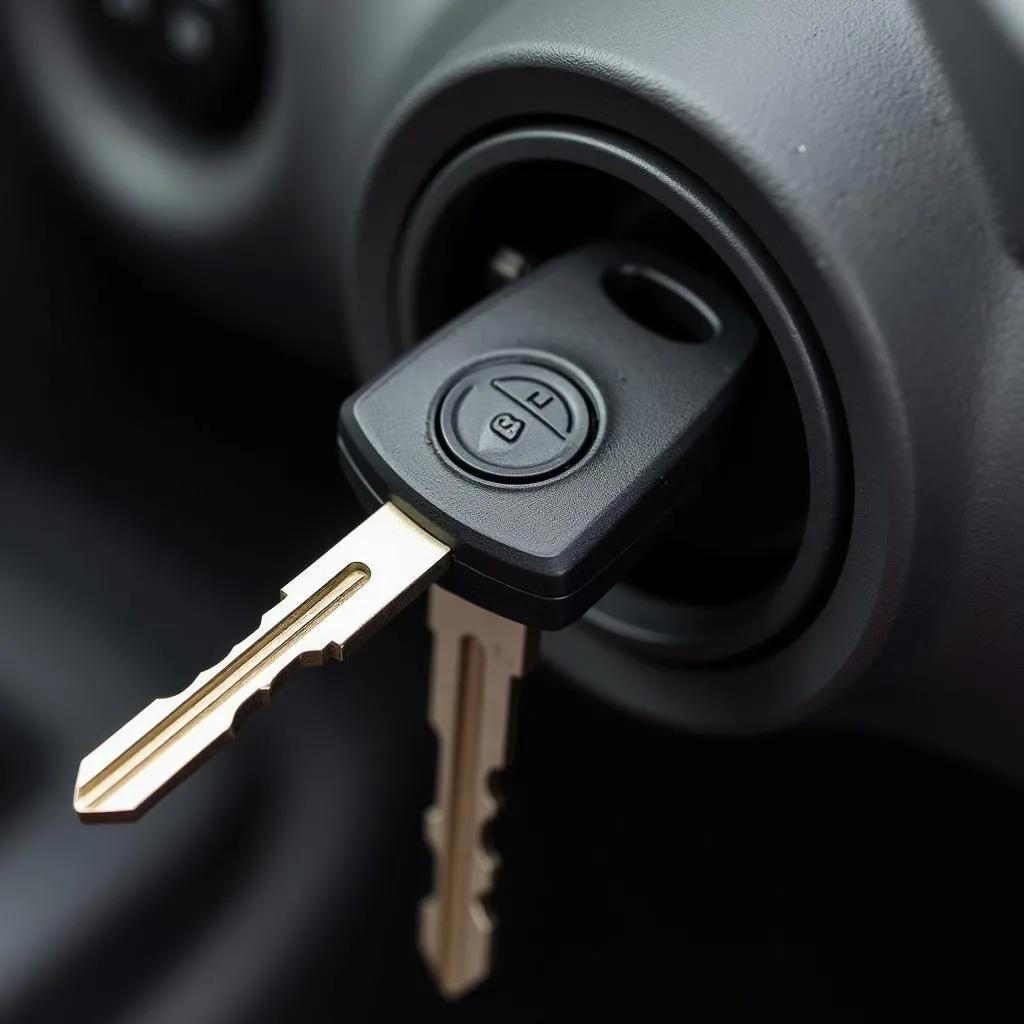A dead car battery is frustrating, but understanding acceptable car battery drain can help you avoid this. This article explains what a normal parasitic draw is, how to identify excessive drain, and steps you can take to resolve the issue. normal parasitic draw Let’s dive in and discover how to keep your car battery healthy and charged.
What is Acceptable Car Battery Drain?
Your car’s electrical system, even when the engine is off, still uses a small amount of power. This is perfectly normal and is called “parasitic draw” or “dark current”. This power keeps things like the clock, radio presets, and security system running. But how much drain is too much? An acceptable car battery drain is generally considered to be between 20 and 50 milliamps (mA). Anything significantly higher than this indicates a potential problem and can lead to a dead battery.
Knowing the acceptable range allows you to troubleshoot and prevent future battery issues. Regularly checking your battery’s drain can prevent unexpected breakdowns and save you time and money in the long run.
How to Measure Car Battery Drain
Measuring your car battery drain is a straightforward process that can be done with a multimeter. A multimeter is an essential tool for any car owner. It allows you to measure various electrical properties, including current, voltage, and resistance.
- Gather your tools: You’ll need a multimeter and potentially a set of alligator clips for easier connections.
- Prepare your car: Turn off all accessories, lights, and the ignition. Close all doors and ensure the car is completely off.
- Connect the multimeter: Set your multimeter to measure DC amps (usually denoted by “A” with a straight line above it). Connect the red lead of the multimeter to the positive terminal of the battery and the black lead to the negative terminal.
- Read the measurement: The multimeter will display the current draw in milliamps (mA). Note the reading. This is your parasitic draw.
 Connecting Multimeter to Car Battery
Connecting Multimeter to Car Battery
Common Causes of Excessive Car Battery Drain
If your parasitic draw is higher than 50mA, you likely have a problem. Here are some common culprits:
- Faulty alternator: A failing alternator can drain the battery even when the engine is off.
- Interior lights: A stuck trunk light or glove box light can be a sneaky drain.
- Bad relay: A faulty relay can constantly draw power, leading to a discharged battery.
- Aftermarket accessories: Improperly installed car alarms, stereos, or other accessories can be a significant source of drain.
- Corroded battery terminals: Corrosion can create a path for electricity to leak, even when the car is off.
“In my experience,” says automotive electrical engineer, David Miller, “the most common cause of excessive battery drain is a faulty door switch or a glove box light that stays on. These are simple fixes that can save a lot of headaches.”
Identifying and Fixing a Parasitic Draw
parasitic battery test Now that you know how to measure your car’s drain, the next step is to identify the source of the problem if it’s excessive. The process involves systematically isolating different circuits.
-
Start with the fuses: Remove one fuse at a time and check the multimeter reading. If the drain drops significantly, you’ve identified the circuit causing the problem. Consult your owner’s manual to see which components are on that circuit.
-
Check relays: Relays can also be a source of drain. You can try swapping relays to see if the draw changes.
-
Inspect wiring: Look for any damaged or corroded wires that could be causing a short circuit.
find parasitic battery drain multimeter Pinpointing the source can be time-consuming but is crucial for a long-term solution.
“When troubleshooting a parasitic draw,” adds Sarah Johnson, lead technician at AutoElectric Solutions, “it’s important to be methodical and check each circuit thoroughly. A simple wiring diagram can be invaluable in this process.”
Preventing Future Battery Drain Issues
normal amperage draw car battery Regularly checking your battery’s health and drain can prevent future issues. Make sure to have your battery tested annually. Also, ensure all accessories are turned off before leaving your car.
parasitic draw car Understanding acceptable car battery drain is essential for maintaining a healthy vehicle. By learning how to measure parasitic draw and identify common causes of excessive drain, you can prevent frustrating breakdowns and keep your car running smoothly.
Conclusion
Understanding acceptable car battery drain is key to preventing a dead battery. By using a multimeter to regularly check your battery’s drain, you can identify potential problems early on and take steps to resolve them. Regular maintenance and being mindful of your car’s electrical system can save you time and money in the long run. Remember, acceptable car battery drain typically falls between 20-50mA.
FAQ
- What is considered a high parasitic draw on a car battery? Anything above 50mA is generally considered high.
- What tools do I need to measure parasitic draw? A multimeter is the essential tool.
- Can a bad alternator cause a parasitic draw? Yes, a faulty alternator can drain the battery.
- How can I prevent parasitic draw? Ensure all accessories are off when the car is not running and regularly check for excessive drain.
- What are the symptoms of a parasitic draw? A dead battery, especially after the car has been sitting for a while, is the most common symptom.
- How often should I check my car battery drain? Checking it every few months is a good preventative measure.
- Is it normal for a car battery to drain slowly? Yes, a small amount of drain is normal due to the car’s electrical systems.

